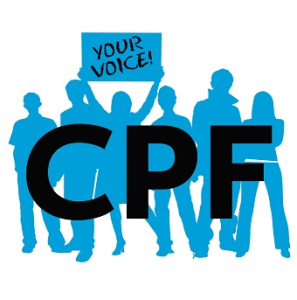The University of Michigan: Fake News, Facts, and Alternative Facts.

LSE: Sustainability Communication Strategies
Develop practical tools and approaches to help navigate the complexities, challenges, and opportunities involved in communicating about sustainability.
About this Course
Duration : 3 weeks
As we face growing environmental and social challenges, companies around the world are seeking better and more sustainable ways of operating. But to drive meaningful change, they also need to rethink the way they communicate about their sustainability mission to employees, stakeholders, consumers, and the public. Today, professionals are tasked with developing open and honest communication strategies that reflect their organisation's efforts and speak to their audiences' attitudes, values, and beliefs about sustainability, while still delivering on business objectives.
The Sustainability Communication Strategies three-week online course from the London School of Economics and Political Science (LSE) will provide you with the tools to navigate the complexities and opportunities involved in impactful sustainability communication. Exploring both theory and practice, you’ll engage with current research, expert insights, and real-world case studies. You’ll learn how to develop an effective sustainability communications strategy that engages your audience as a conversation partner, balances ethics, organizational reputation, and stakeholder interests, and links communication with action.
This course is for professionals and mid-level managers who work in communications-related roles, seeking practical tools and techniques for developing internal and external messaging about sustainability initiatives and challenges. This includes those who are responsible for shareholder and stakeholder relations, community engagement, or public relations, as well as marketing communication professionals such as social media and brand managers. It would also benefit any manager who is in a public-facing function and needs to respond to consumer queries and concerns.
The University of Michigan: Community Engagement: Collaborating for Change
Learn principles and strategies for engaging with U.S.-based and global communities through partnerships, research, service, and learning.
About this course
Skip About this courseNow more than ever, people are seeking ways to affect change in their communities — both locally and around the world. This course is for anyone — from novices to experienced practitioners — who wants to work more effectively with community members and organizations, including through, but not limited to:
- community-academic partnerships
- social change projects
- community service and learning
- education and work abroad
- traditional and community-based participatory research
- non-profit internships
- public scholarship
- civic performance
Prepare in advance or take this course simultaneously to get the most out of your experience by engaging with communities ethically, respectfully, and sustainably.
Developed by a highly interdisciplinary team of U-M content experts and faculty, this course is designed to be both engaging and challenging, offering an accessible entry into foundational topics as well as a jumping off point to pursue work and further learning in effective community engagement. It is also a toolkit and a roadmap that offers concrete takeaways and resources for working effectively with communities.
Throughout the course, you’ll learn from experienced U-M students, faculty, and staff and local community partners, and you’ll have many opportunities to try out and apply the principles and concepts you’re learning.
Harvard University:
U.S. Public Policy: Social, Economic, and Foreign Policies.
About this course
Skip About this coursePublic policy puts laws into action. The executive branch directs the combined activities of the federal government to address a multitude of problems, from the environment to the economy. The policies of the United States affect social issues, economic growth, taxes, regulation, and foreign affairs. This course will take a broad view of public policy in America but will use specific examples, such as the 2008 economic downturn and climate change, to illustrate the wide-ranging effects of those policies.
We’ll address the intersection of religion and politics, and how issues such as abortion and same-sex marriage have played out in the political arena. We’ll discuss fiscal, monetary, welfare and income policy—what they are, what tools they involve, and what political divisions they create. We’ll examine partisan divisions over regulatory policy, and the basis for those divisions. Finally, we’ll trace the evolution of America’s position as a trading nation by examining trade agreements like the North American Free Trade Agreement (NAFTA) and the Trans-Pacific Partnership (TPP).
This course will also serve as an overview of American government, concentrating on overarching tendencies such as its fragmented power structure. The importance of these tendencies will be explained by showing how thoroughly each of them affects American politics.
Citizen Politics in America: Public Opinion, Elections, Interest Groups, and the Media
Overview
Public opinion has a powerful yet inexact influence on elected officials. Politicians risk their careers if they ignore it, yet its power is not easy to capture nor quantify. This course will look at how political parties, campaigns, social movements, special interests, and the news media all play a role in influencing public opinion.
We’ll examine the attributes of public opinion, how polling attempts to measure those attributes, and how they impact the decisions of policymakers. We’ll address the unique features of the two-party system in the U.S., how those parties realign themselves in response to shifting norms, and how their candidates are vetted behind the scenes before the start of a campaign.
Outside of the formal organization of party politics, groups representing various interests aim to affect a change through the political system. Special interest groups resemble political parties, but while parties try to influence elections, groups concentrate on gaining influence over policies. Meanwhile, social movements take place outside these established institutions, often in the form of protest demonstrations and rallies. All of these interests are filtered through the news media, which plays a critical role in shaping people’s images of politics.
This course will help you to understand how these forces shape American politics, from “invisible primaries” to election day and beyond.
Wisconsin Conservation Voters, Wisconsin Democracy Campaign and
